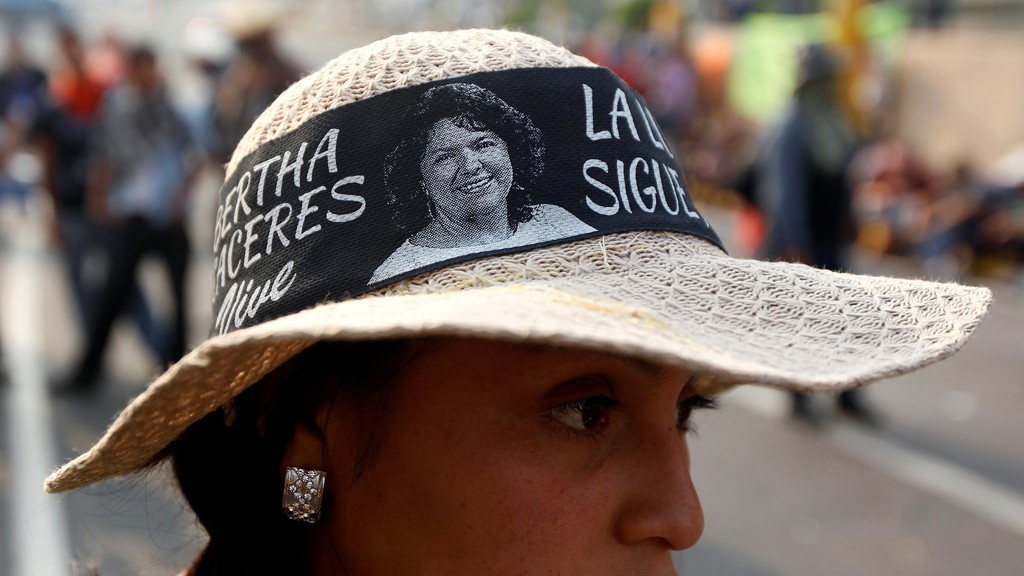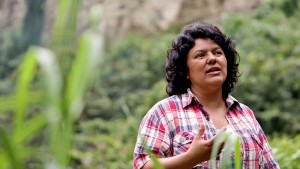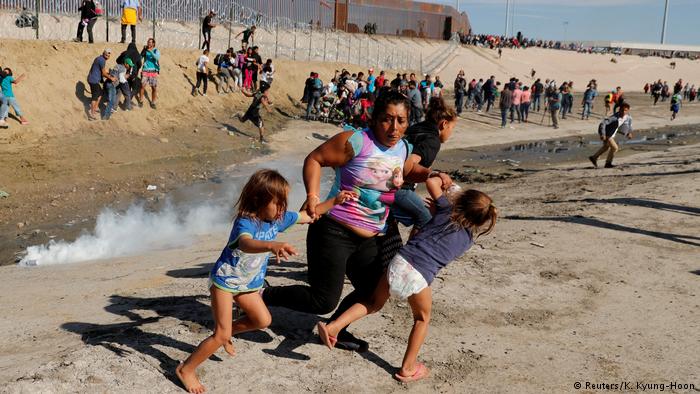My country and its femicides

A demonstrator wears a hat with a picture of late environmental and indigenous rights activist Berta Caceres during a protest to demand justice over her murder of in Tegucigalpa, Honduras, May 9, 2016 © REUTERS/Jorge Cabrera
Honduras has the highest incidence of femicides and in ninety percent of these cases, there is no police investigation. This is a country with the highest level of femicide in Central America. In the last 10 years about 4,500 women have been murdered in Honduras.
The number of femicides is Honduras between January and December 2015 was more than 471. Most of the victims were girls under 15. Sixty percent of the killings happened in Tegucigalpa and Comayagüela, and the others in San Pedro Sula.
The most prominent cases of femicide in Honduras are the murder of Maria José Alvarado in 2014 and Berta Cáceres in March 2016. Alvarado, who was 19 when she was murdered, was Miss Honduras. And Cáceres was an environment and human rights activist. Police and the authorities knew about the danger facing Cáceres since she had received many death threats. Cáceres was killed on March 3, 2016 in La Esperanza. Her murderer has not even been identified. There seems to be no institution monitoring the cases of femicide in Honduras.

In this Jan. 27, 2015 photo released by The Goldman Environmental Prize, Berta Caceres speaks to people near the Gualcarque river located in the Intibuca department of Honduras. (Tim Russo/Goldman Environmental Prize via AP) |
And that is not the only problem that women are facing. In some companies women are paid less than men and they still have to face sexual harassment. If they lose their job, they do not get any compensation at all. Women are – generally speaking – victims of discrimination in Honduras.
What will happen next? There is nothing left to be discussed. But something has to be done for women’s safety. I really do not know why the government and the police are doing nothing. Berta Cáceres fought for human rights and for a better environment. She only wanted a better life for everyone. What causes machismo? And how can femicides continue to occur with such impunity?
Every 16 hours a woman is murdered in Honduras. According to The Geneva Center for the Democratic Control of Armed Forces (DCAF) between 113 and 200 million women disappeared 2013 in its 61 member countries. That means between 1,5 and three million women are victims of violence in every country in 2013.
The killing of women in Ciudad Juarez (Mexico) and Guatemala City is a recurring occurrence, but the local justice department does not investigate these crimes. Most of the women were raped. Some of them were tortured and even mutilated.
According to the Criminal Code of Honduras, Article 118-A, “Femicide is a crime in which women are killed because of their gender.” A person who is accused of committing femicide can be punished with 30 to 40 years in prison.
The third article in the Declaration of Human Rights of the UN states: “Everyone has the right to life, liberty and security of person.” How is it possible that 97% crimes against women in Honduras are not punished or not even investigated? Where are the rights, justice, law – and safety for women? 98% of femicides in Latin America go unpunished.
The truth lies behind this state of affairs is the attitude of the men, who are all machos. They have never known the consequences of their actions – in ending a woman’s life. In what kind of world are we living? The truth is that there is no right in some countries. That is the sad reality in which we live. Sometimes the police do not listen when you go to them with complaints. Many police officers are also corrupt. It happens often that police files disappear in Honduras.
How many women still have to die because of femicide? Why is violence allowed? Is it because the law is not being implemented?
The right to live is holy and has to be respected. But machismo exists and femicide happens, sadly.
Author: Carmen Aguilera García
Editor: Marjory Linardy, Arun Chowdhury
___
WTO RECOMMENDS
When girls are not any longer girls: The abuse of under-age girls in Latin and Central America
In Latin and Central America, there are many cases of young girls who have been raped continuously, since not everyone has respects the rights of minors. According to reports from the United Nations[1] the figures presented in December 2015 indicate that more than six million children and adolescents in Latin America and the Caribbean suffer sexual abuse each year. (From January 15, 2016)
Women and their rights: the reality
The bitter truth can be found in Latin America, Eastern Europe, Asia and Africa. I am a woman and I know for sure how far our rights are protected. I understand the problems that could come with our rights but we deserve dignity, respect and to be treated with love. We have the right to fight for change and not be discriminated because of it. It is a pity that in many countries boundaries have been set up against women. But we must not allow ourselves to be restricted. All human beings are equal. Every person has dignity and deserves to be treated equally and respected. (From November 16, 2015)







